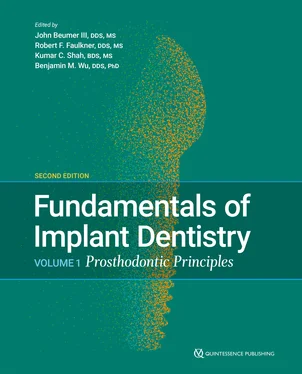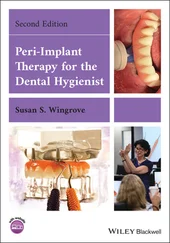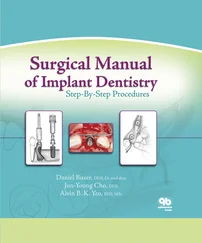60.Wise JK, Sena K, Vranizan K, et al. Temporal gene expression profiling during rat femoral marrow ablation-induced intramembranous bone regeneration. PLoS One 2010;5:e12987.
61.Devlin H, Hoyland J, Newall JF, Ayad S. Trabecular bone formation in the healing of the rodent molar tooth extraction socket. J Bone Miner Res 1997;12:2061–2067.
62.O’Brien CA, Nakashima T, Takayanagi H. Osteocyte control of osteoclastogenesis. Bone 2013;54:258–263.
63.Geblinger D, Zink C, Spencer ND, Addadi L, Geiger B. Effects of surface microtopography on the assembly of the osteoclast resorption apparatus. J R Soc Interface 2012;9:1599–1608.
64.Wang CJ, Iida K, Egusa H, Hokugo A, Jewett A, Nishimura I. Trabecular bone deterioration in col9a1+/– mice associated with enlarged osteoclasts adhered to collagen IX-deficient bone. J Bone Miner Res 2008;23:837–849.
65.Rupp F, Gittens RA, Scheideler L, et al. A review on the wettability of dental implant surfaces I: Theoretical and experimental aspects. Acta Biomater 2014;10:2894–2906.
66.MacDonald DE, Deo N, Markovic B, Stranick M, Somasundaran P. Adsorption and dissolution behavior of human plasma fibronectin on thermally and chemically modified titanium dioxide particles. Biomaterials 2002;23:1269–1279.
67.Gittens RA, Olivares-Navarrete R, Cheng A, et al. The roles of titanium surface micro/nanotopography and wettability on the differential response of human osteoblast lineage cells. Acta Biomater 2013;9:6268–6277.
68.Isa ZM, Schneider GB, Zaharias R, Seabold D, Stanford CM. Effects of fluoride-modified titanium surfaces on osteoblast proliferation and gene expression. Int J Oral Maxillofac Implants 2006;21:203–211.
69.Cooper LF, Zhou Y, Takebe J, et al. Fluoride modification effects on osteoblast behavior and bone formation at TiO 2grit-blasted c.p. titanium endosseous implants. Biomaterials 2006;27:926–-936.
70.Guo J, Padilla RJ, Ambrose W, De Kok IJ, Cooper LF. The effect of hydrofluoric acid treatment of TiO 2grit blasted titanium implants on adherent osteoblast gene expression in vitro and in vivo. Biomaterials 2007;28:5418–5425.
71.Berglundh T, Abrahamsson I, Albouy JP, Lindhe J. Bone healing at implants with a fluoride-modified surface: An experimental study in dogs. Clin Oral Implants Res 2007;18:147–152.
72.Khang D, Lu J, Yao C, Haberstroh KM, Webster TJ. The role of nanometer and sub-micron surface features on vascular and bone cell adhesion on titanium. Biomaterials 2008;29:970–983.
73.Sugita Y, Ishizaki K, Iwasa F, et al. Effects of pico-to-nanometer-thin TiO 2coating on the biological properties of microroughened titanium. Bomaterials 2011;32:8374–8384.
74.Lee SW, Hahn BD, Kang TY, et al. Hydroxyapatite and collagen combination-coated dental implants display better bone formation in the peri-implant area than the same combination plus bone morphogenetic protein-2-coated implants, hydroxyapatite only coated implants, and uncoated implants. J Oral Maxillofac Surg 2014;72:53–60.
75.Wikesjö UME, Qahash M, Polimeni G, et al. Alveolar ridge augmentation using implants coated with recombinant human bone morphogenetic protein-2: Histologic observations. J Clin Periodontol 2008;35:1001–1010.
76.Yoo D, Tovar N, Jimbo R, et al. Increased osseointegration effect of bone morphogenetic protein 2 on dental implants: An in vivo study. J Biomed Mater Res A 2014;102:1921–1927.
77.Yang DH, Lee DW, Kwon YD, et al. Surface modification of titanium with hydroxyapatite-heparin-BMP-2 enhances the efficacy of bone formation and osseointegration in vitro and in vivo. J Tissue Eng Regen Med 2015;9:1067–1077.
78.Susin C, Qahash M, Polimeni G, et al. Alveolar ridge augmentation using implants coated with recombinant human bone morphogenetic protein-7 (rhBMP-7/rhOP-1): Histological observations. J Clin Periodontol 2010;37:574–581.
79.Moy PK, Pozzi A, Beumer J 3rd (eds). Fundamentals of Implant Dentistry. Vol 2: Surgical Principles. Chicago: Quintessence, 2016.
80.Ogawa T, Saruwatari L, Takeuchi K, Aita H, Ohno N. Ti nano- nodular structuring for bone integration and regeneration. J Dent Res 2008;87:751–756.
81.Kubo K, Tsukimura N, Iwasa F, et al. Cellular behavior on TiO 2nanonodular structures in a micro-to-nanoscale hierarchy model. Biomaterials 2009;30:5319–5329.
82.Att W, Kubo K, Yamada M, Maeda H, Ogawa T. Biomechanical properties of jaw periosteum-derived mineralized culture on different titanium topography. Int J Oral Maxillofac Implants 2009;24:831–841.
83.Hori N, Att W, Ueno T, et al. Age-dependent degradation of the protein adsorption capacity of titanium. J Dent Res 2009;88:663–667.
84.Iwasa F, Hori N, Ueno T, Minamikawa H, Yamada M, Ogawa T. Enhancement of osteoblast adhesion to UV-photofunctionalized titanium via an electrostatic mechanism. Biomaterials 2010;31:2717–2727.
85.Lee JH, Ogawa T. The biological aging of titanium implants. Implant Dent 2012;21:415–421.
86.Ogawa T. UV photofunctionalization of titanium implants. J Craniofac Tissue Eng 2012;2:151–158.
87.Att W, Hori N, Takeuchi M, et al. Time-dependent degradation of titanium osteoconductivity: An implication of biological aging of implant materials. Biomaterials 2009;30:5352–5363.
88.Suzuki T, Hori N, Att W, et al. Ultraviolet treatment overcomes time-related degrading bioactivity of titanium. Tissue Eng Part A 2009;15:3679–3688.
89.Suzuki T, Kubo K, Hori N, et al. Nonvolatile buffer coating of titanium to prevent its biological aging and for drug delivery. Biomaterials 2010;31:4818–4828.
90.Hori N, Ueno T, Suzuki T, et al. Ultraviolet light treatment for the restoration of age-related degradation of titanium bioactivity. Int J Oral Maxillofac Implants 2010;25:49–62.
91.Hori N, Ueno T, Minamikawa H, et al. Electrostatic control of protein adsorption on UV-photofunctionalized titanium. Acta Biomater 2010;6:4175–4180.
92.Ogawa T. Ultraviolet photofunctionalization of titanium implants. Int J Oral Maxillofac Implants 2014;29:e95–e102.
93.Iwasa F, Tsukimura N, Sugita Y, et al. TiO 2micro-nano-hybrid surface to alleviate biological aging of UV-photofunctionalized titanium. Int J Nanomedicine 2011;6:1327–1341.
94.Att W, Ogawa T. Biological aging of implant surfaces and their restoration with ultraviolet light treatment: A novel understanding of osseointegration. Int J Oral Maxillofac Implants 2012;27:753–761.
95.Aita H, Att W, Ueno T, et al. Ultraviolet light-mediated photofunctionalization of titanium to promote human mesenchymal stem cell migration, attachment, proliferation and differentiation. Acta Biomater 2009;5:3247–3257.
96.Aita H, Hori N, Takeuchi M, et al. The effect of ultraviolet functionalization of titanium on integration with bone. Biomaterials 2009;30:1015–1025.
97.Kasemo B, Lausmaa J. Biomaterial and implant surfaces: On the role of cleanliness, contamination, and preparation procedures. J Biomed Mater Res 1988;22(A2 suppl):145–158.
98.Serro AP, Saramago B. Influence of sterilization on the mineralization of titanium implants induced by incubation in various biological model fluids. Biomaterials 2003;24:4749–4760.
99.Buser D, Broggini N, Wieland M, et al. Enhanced bone apposition to a chemically modified SLA titanium surface. J Dent Res 2004;83:529–533.
100.Massaro C, Rotolo P, De Riccardis F, et al. Comparative investigation of the surface properties of commercial titanium dental implants. Part I: Chemical composition. J Mater Sci Mater Med 2002;13:535–548.
101.Kikuchi L, Park JY, Victor C, Davies JE. Platelet interactions with calcium-phosphate-coated surfaces. Biomaterials 2005;26:5285–5295.
102.Morra M, Cassinelli C, Bruzzone G, et al. Surface chemistry effects of topographic modification of titanium dental implant surfaces: 1. Surface analysis. Int J Oral Maxillofac Implants 2003;18:40–45.
Читать дальше












